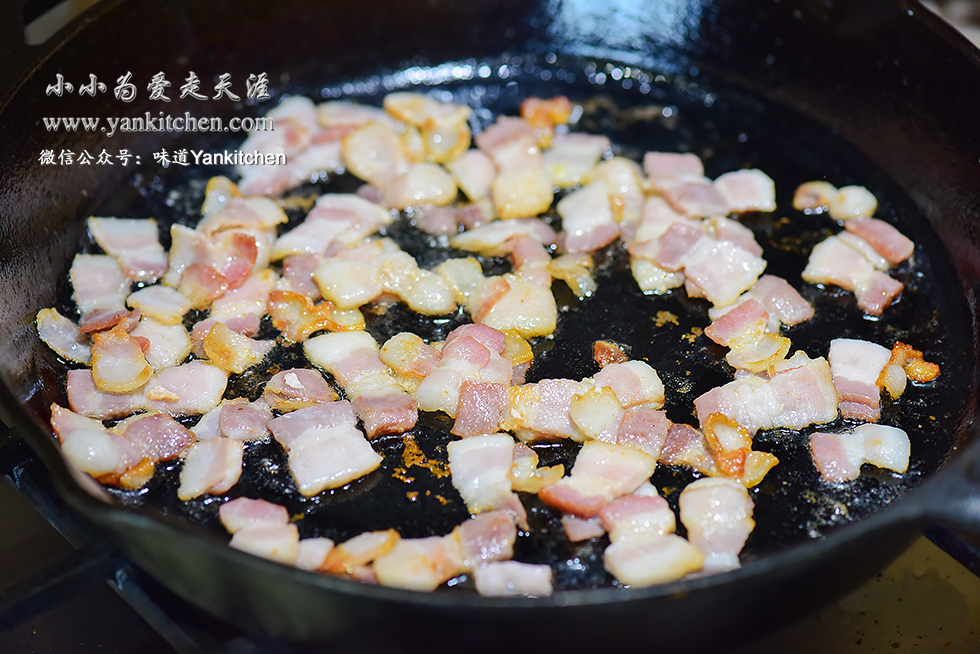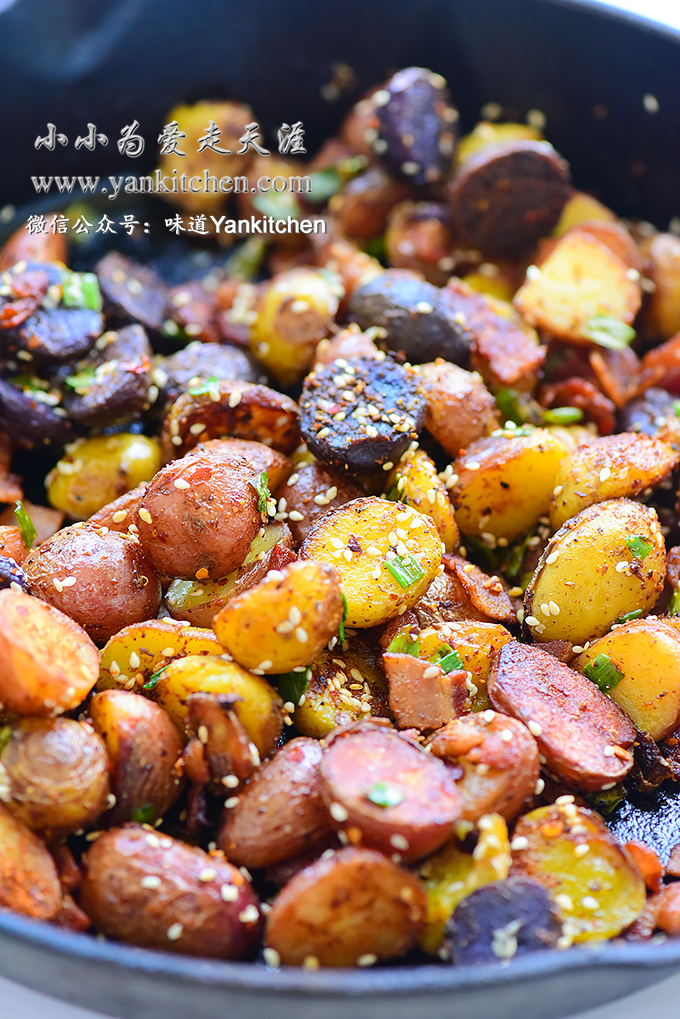中文菜谱:香煎培根彩色小土豆
I always have a special enthusiasm for potatoes, especially the mini ones. When I was living in Michigan, we always visited the local farmers market twice a week to buy some freshly roasted coffee beans and newly harvested potatoes. Those were two highlights during the week.
If you have ever tried the freshest potatoes dug out the soil the very same day you cook them, it would be really hard to go back to the ones sold in super market stores. They are so fresh, starchy, hearty, and earthy with a nutty aroma and super creamy texture.
One of my favorite ways to cook mini potatoes is to pan fry them with bacons. The fat rendered from bacons would add a rich porky fatty flavor to the potatoes, which is exactly why they taste so amazingly good.
Ingredients:
1 lb mini rainbow potatoes
6 to 8 slices of bacons, cut into small pieces
salt to taste
freshly ground black pepper
white sesame seeds
chopped green onion
spicy chili dry mix *
Directions:
Rainbow mini potatoes are sold in most grocery stores. If you can’t find them, the yellow or red mini ones will be almost equally tasty too.
Rinse the potatoes under running water. Add to a pot of boiling water along with a couple teaspoons of salt in it. Cook the potatoes over medium heat for 15 to 20 minutes or until you can easily piece them in the center with a fork.
BTW, the potato skins can help them to stay in shape. I like to leave them on the potatoes.
Cut every potato into two halves.
Heat a cast iron skillet over medium high heat.
Add bacons.
Sauté the bacons until slightly golden brown.
Add potatoes
Reduce the heat to medium low. Flip the potatoes occasionally. Keep cooking over medium low heat until they are golden brown.
Season with salt and black pepper
Sprinkle with chopped green onions, white sesame seeds and spicy chili dry mix.
Continue to cook for another couple minutes. Remove from heat and serve hot immediately.
It is so true that bacon makes everything taste better! O(∩_∩)O~
* Chili spice dry mix is available in Asian grocery stores. I love to make my own at home. It is quite simple to do so. Separately dry roast chili peppers, Sichuan pepper corns, sesame seeds, cumin and peanuts. And then grind them together into fine powder with a coffee grinder or vitamix.
The mix can be used in sautés, BBQ, grilling or salads.
Go ahead play with the spices. It is easy to make some simple mix with big flavors!
































































